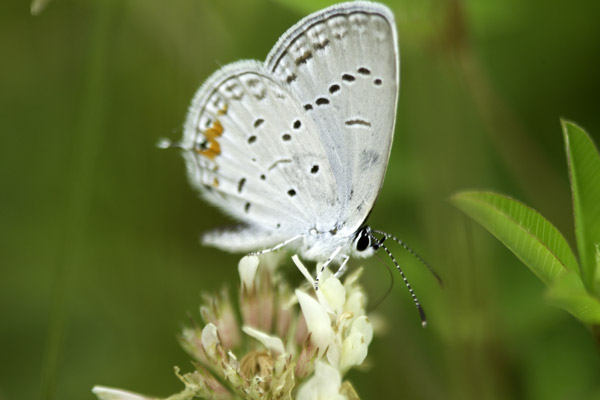
By Dan Zarlenga, Missouri Department of Conservation
Many people consider the month of June the start of summer. Among the many pleasures the warm season brings is a flurry of butterflies. We all admire these graceful, colorful insects, but with butterflies the beauty is more than scale-deep. There are some fascinating facts hidden under those flashy wings!
Butterflies are anything but delicate… they can be pretty tough. Did you know that some of them fly thousands of miles? The monarch butterfly, for instance, makes an amazing migration from the U.S. to one specific roosting area in Mexico. Their path takes them through Missouri each year.
To fuel all that activity, butterflies need plenty of food. They eat with a feeding tube called a proboscis. The proboscis unfurls like a tiny whip to slurp up food, then coils back up again when the butterfly is finished eating. Butterflies feed mostly on flower nectar, but some species get nourishment from tree sap, decaying fruit, and in some cases, even decaying animals.
A butterfly has little worry of sticking its foot in its mouth though, because its toes are tongues, so to speak. They instantly know if a plant they land on is a good source of nectar or a suitable host for their eggs by “tasting” it with chemical-sensing feet.
Speaking of eggs, most of us know the butterfly leads a double life. It hatches from the egg as a worm-like, voracious munching machine called a caterpillar. After it’s built up enough energy from all that eating, it creates a shell around itself called a chrysalis. Inside, the caterpillar undergoes a magic transformation known as metamorphosis and emerges as the radiant butterfly.
The butterfly part of its life is mostly spent finding a mate. Maybe it’s why they’re so beautiful!
That’s not the only bit of magic butterflies can perform however. Their wings are a pair of flying rainbows. The butterfly’s wings have scales, which form an overlapping pattern, much like roof shingles. These scales are transparent, but they bend light like a prism to create the vibrant assortment of colors we see. This bending, or refracting, of light is the same trick that gives rainbows their color.
Head outdoors the next warm day and marvel at these amazing creatures. A variety of insect guidebooks and mobile apps can aid you in identifying the wide assortment of butterflies you can see. The Missouri Department of Conservation’s online field guide at MDC.mo.gov can also help. When you think about the incredible life they live, you’ll agree that your average butterfly is a lot more than a pair of pretty wings.


